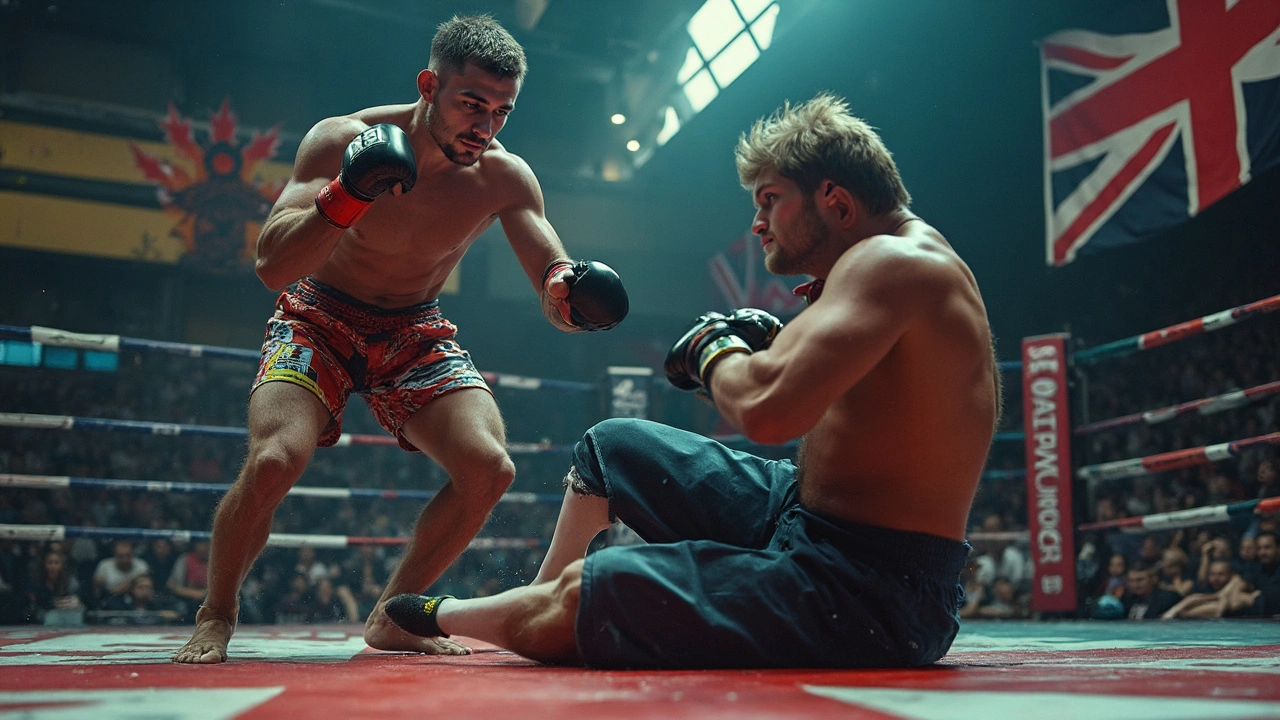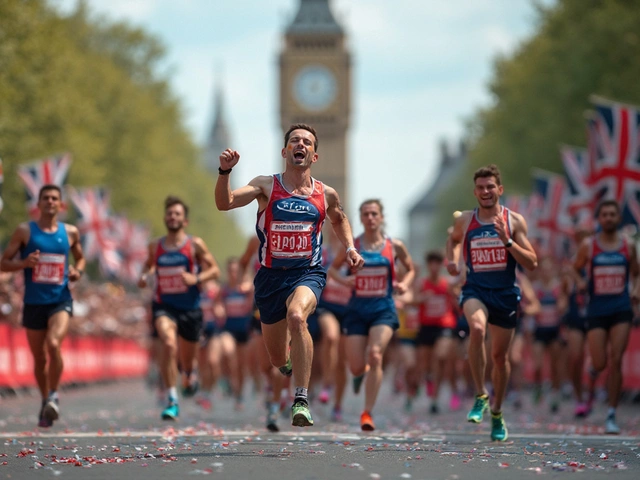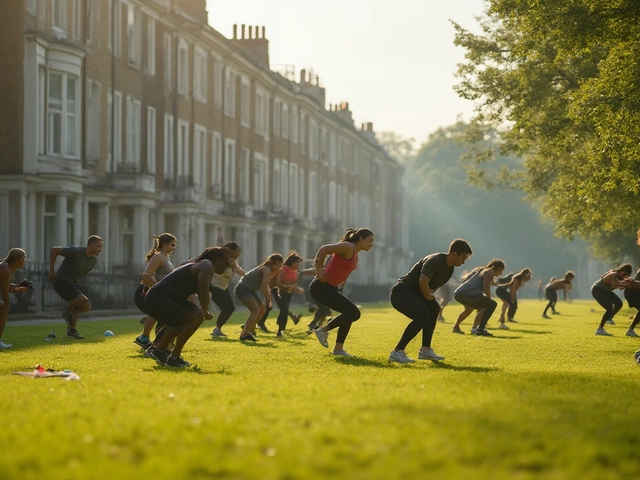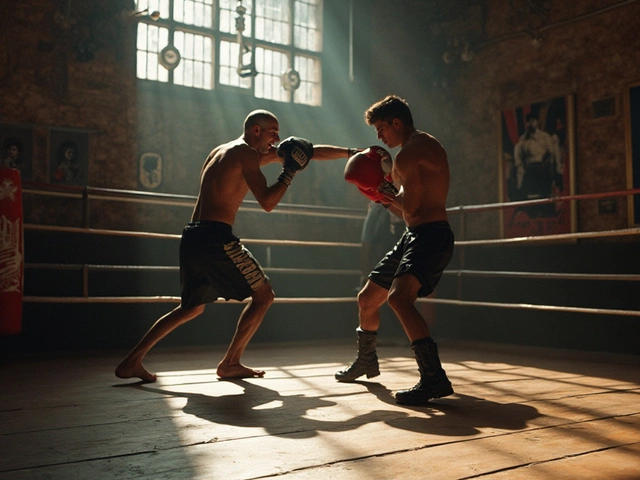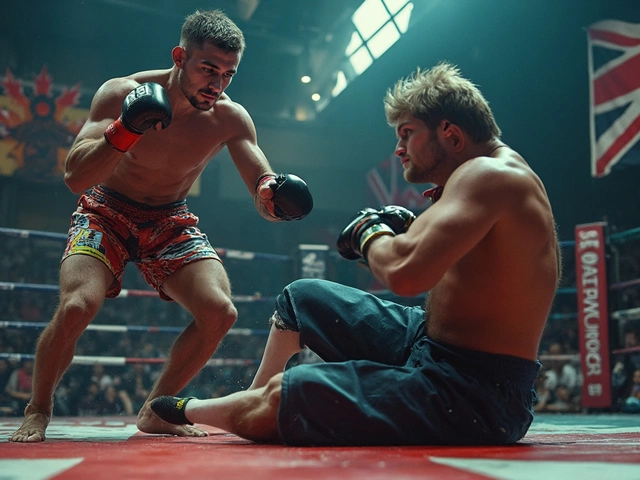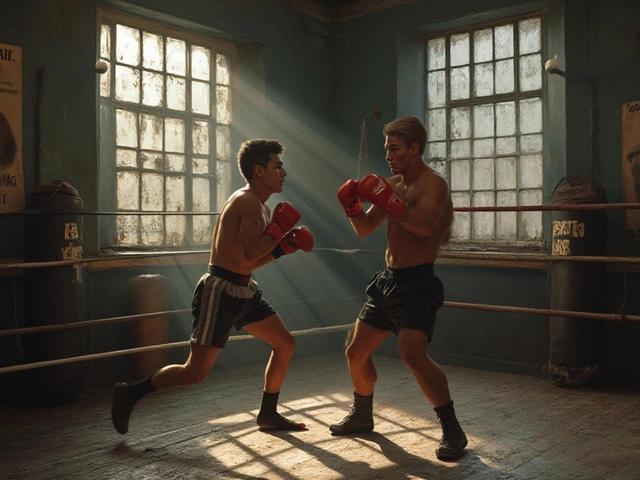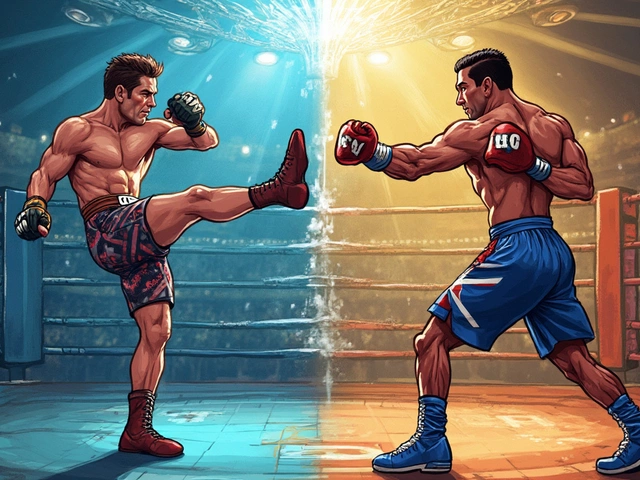If you're into combat sports, you've probably wondered why some people prefer MMA over boxing. The truth is, MMA brings a whole new level of complexity to the table. It combines striking and grappling, drawing from disciplines like Muay Thai, wrestling, and Brazilian Jiu-Jitsu. This makes every fight unpredictable and utterly gripping.
Boxing is great, don't get me wrong. It's got rich traditions and has been around forever. But MMA shakes things up by not limiting fighters to just their fists. Anything goes—except the illegal moves, of course—and that leads to a wider array of outcomes. One moment you're watching a slick boxing combo, and the next, bam! A stunning takedown changes everything.
- Variety of Techniques
- Excitement and Unpredictability
- Training Demands
- Fan Engagement
- The Future of Combat Sports
Variety of Techniques
One of the coolest things about MMA is the sheer variety of fighting techniques on display. Unlike boxing, which focuses solely on throwing punches, MMA fighters are like Swiss Army knives—they need to be prepared for anything. This variety is a big reason why MMA can feel more dynamic compared to traditional boxing.
Striking Techniques
MMA incorporates a whole range of striking methods. Sure, you have your classic punches, but then you add in kicks, knees, and elbows. Ever seen a spinning back fist or a head kick? These moves aren't just flashy—they can also end the fight in an instant. Fighters train in disciplines like kickboxing and Muay Thai to make sure they can hit hard from all angles.
Ground Game
Then there's the ground game, something boxing simply doesn't offer. Brazilian Jiu-Jitsu and wrestling dominate this aspect. Fighters use takedowns to bring their opponent to the mat, and from there, they've got a whole arsenal of submissions and ground-and-pound tactics. Imagine trying to defend a chokehold after being slammed down—it takes skill and grit.
Hybrid Training
To be successful, MMA fighters train across multiple disciplines. You might see someone who started in judo but becomes a beast with striking over time. This cross-training makes fights unpredictable. It's not uncommon to see a fight swing one way with a jab, then flip upside down with a takedown and finish with a submission.
In short, the variety of techniques keeps the fans on the edge of their seats. Whether you're new to MMA or a long-time fan, the spectacle of different fighting styles blending together is something you don't want to miss.
Excitement and Unpredictability
What makes MMA so thrilling is the sheer unpredictability of each match. Unlike boxing, where you pretty much know punches are the only thing coming, MMA keeps you on the edge of your seat with its diverse combat styles. Fighters can switch from striking to grappling in a split second, which keeps both fans and opponents guessing.
Take a classic example: the fight between Anderson Silva and Chael Sonnen at UFC 117. For four and a half rounds, Sonnen dominated Silva on the ground, and it looked like Silva was on his way to a rare loss. But with just under two minutes left, Silva pulled off a miraculous triangle choke submission, showcasing the unpredictable nature of MMA.
Varied Finishing Moves
In MMA, not only can you win by knockout, but submissions can end fights out of nowhere. Fighters are trained in various disciplines, like Jiu-Jitsu and wrestling, giving them multiple tools to secure a victory. This variety means that no two fights are ever the same, keeping fans glued to their screens.
- Knockouts: Just like boxing, but imagine adding kicks, elbows, and knees.
- Submissions: Techniques like the rear-naked choke or armbar can end a fight in seconds.
- Decision: The match can also be scored by judges if it goes the distance, adding another layer of unpredictability.
MMA also varies in that ground and pound tactics can lead to a ref stoppage, something that doesn’t happen in boxing.
Engaged Fans
The variety and unpredictability naturally generate more excitement among fans. Whether you're in the arena or watching from home, that rush of adrenaline is real. The crowd never knows what to expect and that keeps the energy levels high throughout the event.
Plus, the drama isn’t just confined to the octagon. With face-offs and weigh-ins, rivalries often make headlines, adding another level of entertainment. Fans relish these stories and talking points, increasing engagement.
Overall, it’s the surprising twists and fast pace that make MMA a spectacle, always delivering something unexpected in every bout.
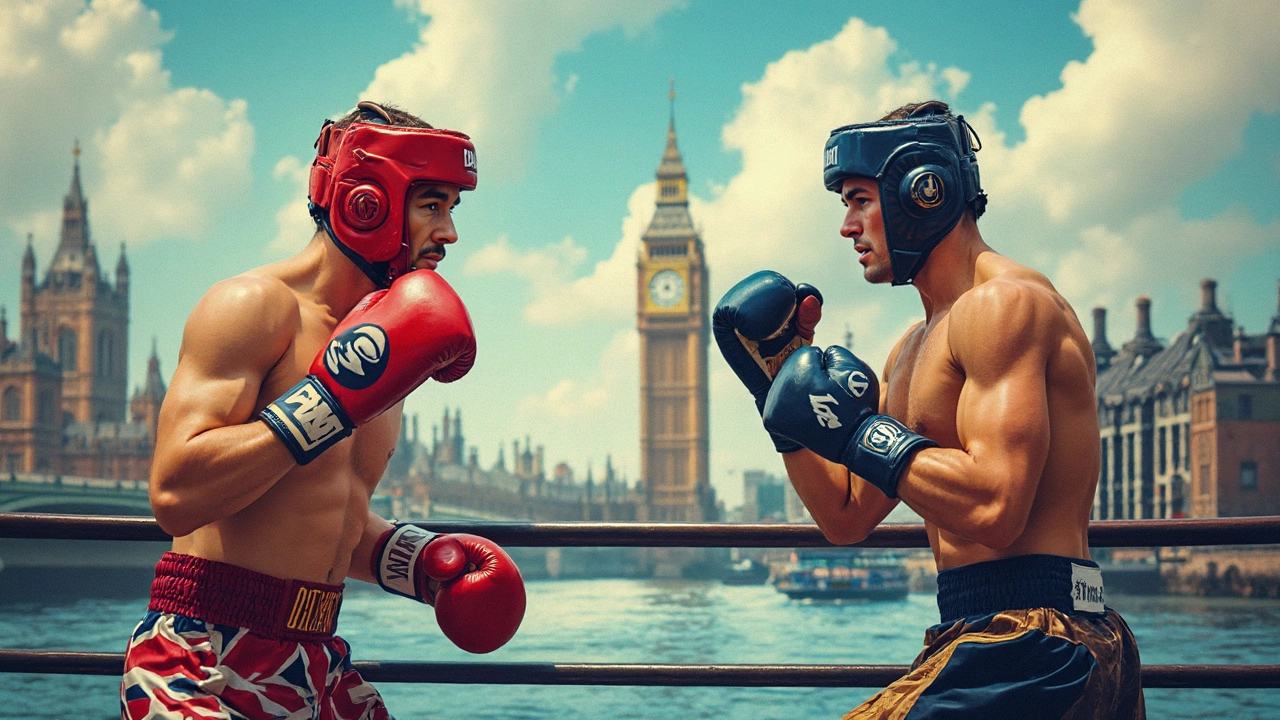
Training Demands
When comparing MMA and boxing, the training requirements are absolutely intense, but they vary greatly between the two. In boxing, fighters focus heavily on footwork, endurance, speed, and power. It's a lot about conditioning your body to outlast your opponent while delivering precise punches.
On the other hand, MMA fighters need an exhaustive rotation of training. Not only do they have to master striking similar to boxing, but they also need to get comfortable on the ground. We're talking wrestling, Brazilian Jiu-Jitsu, and maybe some Muay Thai clinches. That's why you'll often hear MMA fighters talking about spending time at different gyms or hiring specialist coaches, which adds a whole new layer to their preparation.
Cross-Training
Most high-level MMA athletes train in multiple disciplines simultaneously. Ever thought about doing a striking session in the morning, followed by grappling in the evening? That's regular life for them. The ability to switch between these is crucial when you're in the octagon, as you have to anticipate every move your opponent makes.
Routines often look something like:
- Striking practice – Working on punches, kicks, elbows, and knees.
- Ground game – Drilling takedowns, submissions, and transitions.
- Strength and conditioning – Building power and resilience.
- Mental preparation – Strategy, focus, and visualization techniques.
And that's just scratching the surface. The physical toll is immense, requiring careful recovery strategies like cryotherapy or yoga to keep the athletes' bodies in prime fighting condition.
So while both MMA and boxing demand dedication, MMA tends to require a more diversified approach. This makes MMA fighters some of the most versatile athletes in the world.
Fan Engagement
When it comes to MMA, fan engagement is on another level. This sport thrives on its community, blending social media interactions, live events, and accessible fighter personalities. If you've ever followed big promotions like the UFC, you'll notice they've nailed the art of keeping fans hooked.
Compared to boxing, MMA fighters often share a more relatable persona. They're active on social media, tossing around memes or sharing sneak peeks of their training. Fans love this because it humanizes the fighters, making them more than just competitors inside the cage.
Live Events and Spectacle
Attending an MMA event is like being part of an electric atmosphere. From the walkouts to fighter face-offs, the buzz is intense. Many venues embrace interactive elements like fan zones where one can catch special promos or meet fighters. It's like a giant community gathering that feels inclusive.
Social Media and Streaming
On platforms like Twitter and Instagram, MMA fans are always busy. They follow rivalries, fighter banter, and even amateur fighters rising in the scene. This creates a dialogue that runs 24/7. Plus, streaming services have made it more accessible than ever to catch fights live or revisit the ones you missed. Whether it's on the big screen or a smartphone, MMA is right at your fingertips.
If numbers fascinate you, the growth is worth a look. Check this basic comparison:
| Aspect | MMA | Boxing |
|---|---|---|
| Average Social Media Followers (Top Fighters) | 3 million | 2 million |
| Average Event Attendance | 15,000 | 12,000 |
The stats pretty much sum it up. MMA, with its vast pool of talent and diverse fighting styles, pulls spectators in ways that boxing is struggling to match. The fan culture surrounding MMA makes every event feel like a global celebration of sport and skill.
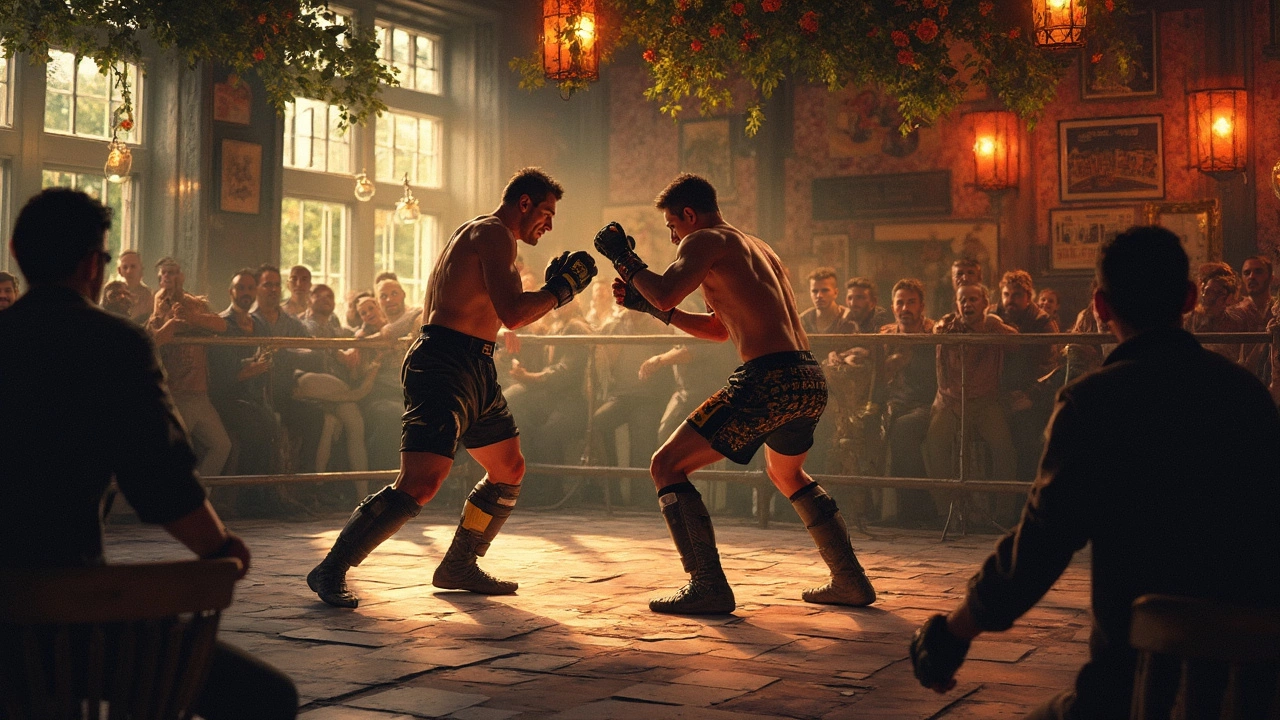
The Future of Combat Sports
The realm of combat sports is evolving, and it seems that MMA is leading the charge. What's on the horizon for this fast-paced world? Well, the blend of versatility and entertainment that MMA offers might very well set the stage for what's to come. With various fighting styles under its belt, MMA presents a captivating experience that has been steadily gaining ground.
So, what exactly sets MMA apart as we look to the future? For one, the integration of technology is making a splash. From real-time fan engagement with the help of virtual reality to data analytics driving strategic training, technology’s role can’t be ignored. Fighters and trainers are getting smarter, using data to break down not just their opponents, but also to refine their own skills.
Rising Popularity and Global Reach
The global appeal of MMA is another factor shaping the future of combat sports. Unlike boxing's perceived complexity due to its deep-rooted tradition and reigning boxing associations, MMA provides a universally digestible format. We're seeing MMA events scattered across continents, drawing crowds in the U.S., Brazil, Russia, and beyond. When you encounter a sport that resonates on such a wide scale, expansion and globalization can't be far behind.
Shifting Popularity and New Stars
As MMA grows, so does its audience—drawing in younger fans who crave the dynamic energy and diversity of styles. This means that new stars are consistently emerging on the scene, which in turn cultivates a thriving ecosystem of aspiring fighters eager to leave their mark. Take Khabib Nurmagomedov, for example. His rise to global fame showcased the power of modern MMA and helped seal its position in the limelight.
The future of combat sports seems bright, with MMA rising as a dominant force. By adapting to modern trends and embracing technology, it continues to redefine what's possible inside the cage—and quite possibly what could extend beyond it, into a mainstream phenomenon.
